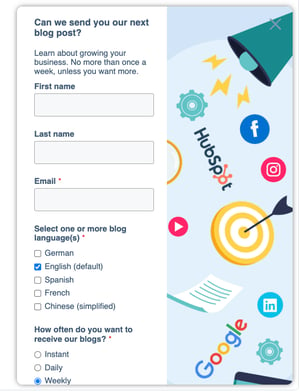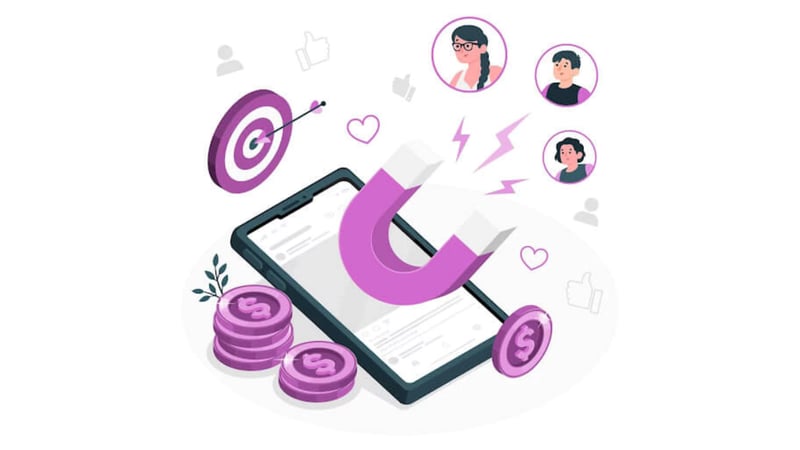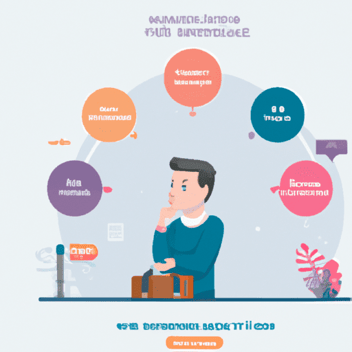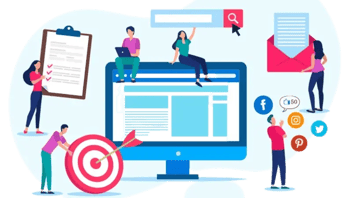Practici CTA: Transformați vizitatorii în clienți potențiali
Ați pus vreodată suflet în site-ul dvs. web, doar pentru a vedea că vizitatorii dispar după navigare? Nu sunteți singuri. Multe întreprinderi se luptă cu vizitatorii care dispar fără să se convertească.
Adevărul este că acești vizitatori sunt interesați! Dar fără o direcție clară, s-ar putea să nu știe ce să facă în continuare. Aici intervin apelurile la acțiune (CTA).
CTA-urile sunt acele mesaje persuasive care îndrumă vizitatorii către acțiuni specifice, cum ar fi descărcarea unui ebook sau solicitarea unei demonstrații. Acestea acționează ca niște punți de conversie, transformând vizitatorii site-ului în clienți potențiali valoroși, care sunt cu un pas mai aproape de a deveni clienți plătitori.
Analizați următoarele date:
-
Un apel la acțiune bine definit poate genera o creștere a ratei de conversie de până la 200%.
-
47% dintre vizitatorii unui site părăsesc pagina în primele secunde dacă nu identifică rapid un apel la acțiune clar.
-
Testarea A/B a diferitelor variante de apeluri la acțiune poate aduce o creștere a conversiilor de până la 30%.
Dar crearea unui CTA convingător nu este un truc magic. Pentru optimizarea ratei de conversie, trebuie să luați în considerare stadiul în care se află vizitatorul dvs. în călătoria cumpărătorului - etapele prin care trece înainte de a face o achiziție.
De ce tip de CTA am nevoie? Înțelegerea parcursului cumpărătorului
Așadar, de ce unii vizitatori ai site-ului par să sară de pe pagina dvs. de pornire după o privire rapidă, în timp ce alții pătrund mai adânc în conținutul dvs. și se transformă în cele din urmă în clienți potențiali? Răspunsul se află în înțelegerea parcursului cumpărătorului - calea pe care o urmează potențialii clienți pe măsură ce trec de la conștientizarea problemei la decizia finală de cumpărare. Prin adaptarea apelurilor la acțiune (CTA) la fiecare etapă a acestei călătorii, puteți crește semnificativ eficiența acestora și puteți converti mai mulți vizitatori ai site-ului în clienți potențiali.
Călătoria cumpărătorului: O foaie de parcurs către conversii
Călătoria cumpărătorului constă de obicei în trei etape-cheie: Conștientizare, Considerare și Decizie. Fiecare etapă reprezintă un nivel diferit de cunoștințe și intenții ale cumpărătorului, necesitând CTA-uri specifice pentru a-l ghida mai departe în pâlnia de conversie.
-
Etapa de conștientizare: În acest moment, potențialii clienți abia încep să devină conștienți de o problemă sau de o provocare cu care se confruntă. Este posibil ca aceștia să cerceteze simptome, să analizeze tendințele din industrie sau pur și simplu să încerce să își înțeleagă mai bine nevoile.
-
Etapa de considerare: aici, cumpărătorii și-au identificat problema și caută în mod activ soluții. Ei compară diferite opțiuni, evaluează caracteristicile și cântăresc avantajele și dezavantajele diferitelor produse și servicii.
-
Etapa de decizie: Acum, cumpărătorii și-au restrâns opțiunile și se pregătesc să decidă. Ei caută reasigurări și informații care să îi ajute să aleagă cea mai bună soluție pentru nevoile lor specifice.
CTA-uri adaptate pentru fiecare etapă
Etapa de conștientizare
Deoarece vizitatorii din această etapă se concentrează în principal pe educație și pe colectarea de informații, CTA-urile dvs. ar trebui să urmărească să construiască conștientizarea brandului și să stabilească compania dvs. ca lider de opinie. Iată cum ar putea arăta CTA-urile dvs:
-
-
"Descărcați ebook-ul nostru gratuit: [Subiect relevant pentru problema cumpărătorului]"
-
"Abonați-vă la newsletter-ul nostru pentru informații despre industrie"
-
"Urmăriți un webinar: [Subiect care abordează punctele dureroase ale cumpărătorului]"
-
Observați cum aceste CTA-uri oferă conținut valoros în schimbul informațiilor de contact, permițându-vă să hrăniți lead-urile și să construiți încredere cu potențialii clienți.
Etapa de analiză
Clienții potențiali aflați în etapa de analiză sunt mai implicați și evaluează în mod activ soluțiile. Aici, CTA-urile dvs. trebuie să se concentreze pe evidențierea beneficiilor produsului sau serviciului dvs. și pe abordarea punctelor lor dureroase specifice.
-
-
"Obțineți o versiune de încercare gratuită a software-ului nostru"
-
"Solicitați o demonstrație pentru a vedea cum vă putem ajuta"
-
"Citiți blogul nostru pentru ghiduri aprofundate pe [subiect relevant]"
- "Descărcați un ghid comparativ: [Produsul dvs. vs. concurenții]"
-
Aceste CTA-uri oferă o scufundare mai profundă în soluțiile dvs., permițând clienților potențiali să experimenteze direct modul în care oferta dvs. le rezolvă provocările.
Etapa decizională
În etapa de decizie, cumpărătorii sunt pregătiți să se angajeze. CTA-urile dvs. ar trebui să se concentreze pe eliminarea oricărei ezitări rămase și pe îndemnarea acestora către conversie. Iată câteva CTA-uri puternice de utilizat:
-
-
"Începeți astăzi consultarea dvs. gratuită!"
-
"Contactați-ne pentru o ofertă personalizată"
-
"Ați început să generați rezultate cu [produsul sau serviciul nostru/acestuia] în termen de 2 săptămâni!"
-
"Ofertă limitată în timp: Actualizați-vă contul acum!"
- "Descărcați un studiu de caz: [Prezentarea rezultatelor pozitive ale clienților]"
-
Aceste CTA-uri oferă o cale clară către o achiziție sau către pasul următor în procesul de cumpărare, facilitând conversia clienților potențiali.
Crearea mai multor CTA-uri
Imaginați-vă că aveți un singur discurs de vânzări pentru fiecare potențial client. Nu ar fi foarte eficient, nu-i așa? Același lucru este valabil și pentru CTA-uri. În timp ce un singur CTA ar putea face treaba uneori, adevărata putere constă în crearea mai multor variante pentru fiecare etapă a parcursului cumpărătorului.
Există mai multe motive convingătoare pentru a adopta variațiile CTA:
-
Apel la diferite preferințe: Oamenii răspund la mesaje în diferite moduri. Unii preferă CTA-uri clare și concise, în timp ce alții ar putea prefera opțiuni mai creative sau bazate pe curiozitate. Cu ajutorul variațiilor, răspundeți diferitelor preferințe ale vizitatorilor, sporind șansele de a le capta atenția.
-
Optimizați pentru dispozitive specifice: Modul în care oamenii interacționează cu site-ul dvs. web poate varia în funcție de dispozitivul pe care îl utilizează. Un CTA lung, cu mult text, poate funcționa bine pe un desktop, dar poate părea greoi pe un telefon mobil. Crearea de variații vă permite să adaptați CTA-urile pentru o performanță optimă pe diferite dimensiuni ale ecranului.
-
Testarea A/B pentru îmbunătățirea continuă: Frumusețea variațiilor constă în capacitatea de a le testa A/B. Acest lucru vă permite să comparați diferite CTA-uri unul lângă altul și să vedeți care dintre ele rezonează cel mai bine cu publicul dvs. În timp, vă puteți rafina CTA-urile pe baza datelor, asigurându-vă că utilizați cele mai eficiente versiuni pentru fiecare etapă a parcursului cumpărătorului.
Prin adoptarea variațiilor CTA și utilizarea testării A/B, puteți debloca date valoroase și vă puteți optimiza continuu CTA-urile pentru a obține conversii mai mari și a maximiza potențialul site-ului dvs.
Variațiile CTA în acțiune
Haideți să analizăm în profunzime modul în care variațiile CTA vă pot crește dramatic descărcările de cărți electronice, vizând în special postările de blog din cadrul etapei Awareness a parcursului cumpărătorului. Aici, vom prezenta patru CTA-uri unice care promovează aceeași carte electronică descărcabilă, fiecare concepută pentru a capta interesul vizitatorilor în moduri diferite:
1. CTA text simplu în linie
Imaginați-vă o linie scurtă și clară de text încorporată în postarea dvs. pe blog, ca aceasta:
Această abordare directă transmite un mesaj clar fără a copleși vizitatorii. Luați în considerare asocierea acestui text CTA cu o imagine relevantă (de exemplu, un grafic atrăgător pentru social media) pentru a atrage mai multe clicuri.
2. CTA cu buton simplu
Pentru o abordare mai îndrăzneață, luați în considerare un buton CTA integrat perfect în aspectul postării dvs. pe blog. Acesta ar putea spune ceva de genul: "Obțineți copia dvs. gratuită: Ghidul suprem pentru succesul în social media". Formatul luminos al butonului adaugă un indiciu vizual, solicitând o acțiune imediată.
3. Slide-in CTA
Imaginați-vă o imagine captivantă, cu un mesaj concis, care alunecă din partea laterală a postării dvs. pe blog la intervale strategice. Acest CTA "slide-in" ar putea oferi: "Stimulează-ți jocul în social media: Descărcați cartea noastră electronică gratuită aici!" Această abordare subtilă captează atenția fără a întrerupe fluxul de lectură.

4. Imagine CTA
Gândiți-vă la o imagine atrăgătoare legată direct de conținutul cărții dvs. electronice (de exemplu, un infografic care prezintă statistici privind social media). Suprapuneți imaginea cu un apel la acțiune convingător de genul: "Deblocați secretele succesului în social media! Descărcați cartea noastră electronică gratuită (faceți clic pe imagine!)". Această abordare vizuală valorifică puterea imaginilor pentru a stimula interesul și descărcările.
Numirea CTA-urilor dvs.
Ținerea evidenței CTA-urilor poate fi o provocare, mai ales atunci când creați mai multe variante pentru diferite campanii. Aici intervine o structură clară de denumire, care vă economisește timp și asigură o implementare fără probleme.
Rețeta noastră pentru succes are trei ingrediente cheie:
-
Plasarea: Începeți prin a indica unde se va afla CTA-ul. Aceasta ar putea fi "Blog", "Pillar Page" sau chiar "Email".
-
Localizarea pe pagină: Apoi, specificați locația CTA-ului pe pagină. Exemple comune includ "Inline Text", "Bottom" sau "Slide-In".
-
Destinație: În cele din urmă, descrieți unde ajunge utilizatorul după ce dă clic. Aceasta este de obicei o pagină de destinație (LP) cu o ofertă specifică.
Acum, să punem această rețetă în acțiune! Iată un exemplu:
Blog - Inline Text -> LP | Awareness Free Trial
Numele acestui CTA ne spune că este un CTA de tip text inline conceput pentru postările de pe blog. La clic, acesta direcționează utilizatorii către o pagină de destinație care oferă o încercare gratuită, perfectă pentru captarea de clienți potențiali în etapa de conștientizare a parcursului cumpărătorului.
Adoptând această structură de denumire, veți crea un sistem pentru o organizare ușoară, permițându-vă să identificați rapid CTA-ul potrivit pentru orice inițiativă de marketing.
Stăpânirea artei CTA-urilor
CTA-urile sunt puntea care ghidează vizitatorii site-ului de la navigarea pasivă la implicarea activă. Prin adaptarea CTA-urilor dvs. la fiecare etapă a călătoriei cumpărătorului, vă adresați direct nevoilor și motivațiilor acestora, crescând dramatic șansele de conversie.
Sunteți gata să duceți puterea de conversie a site-ului dvs. la nivelul următor? Implementați aceste bune practici CTA astăzi și vedeți cum generația dvs. de lead-uri crește vertiginos! Doriți să pătrundeți mai adânc în lumea strategiilor de inbound marketing concepute pentru a vă atrage, angaja și încânta publicul? Contactați Aspiration Marketing pentru a descoperi cum vă pot ajuta soluțiile noastre să vă atingeți obiectivele de marketing.
Acest conținut este disponibil și în:
- Germană: CTA-Best Practices: Website-Besucher in Leads verwandeln
- Engleză: CTA Best Practices: Turning Website Visitors into Leads
- Spaniolă: Mejores prácticas de CTA: Convertir visitantes en clientes potenciales
- Franceză: CTAs : Transformer les visiteurs d'un site web en clients potentiels
- Italiană: Pratiche CTA: Trasformare i visitatori del sito web in clienti
- Chineză: CTA 最佳实践:将网站访客转化为潜在客户












Lasă un comentariu cu părerea ta.